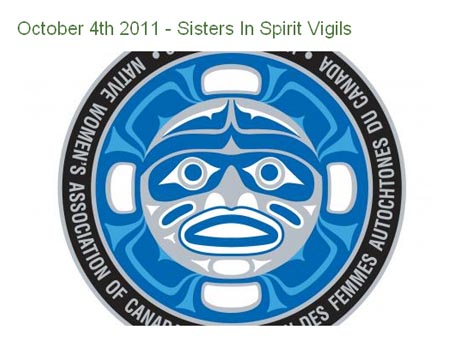Angeline Eileen Pete, 28, reported missing from British Columbia in May. Roberta Dawn McIvor, 32, found murdered near Lake Winnipeg in July. Kimberley Nolin Napess, 15, last seen in Quebec City in August. And two Friday’s ago, Verna Simard, 50, dead after plunging from the sixth-floor window of her residence in Vancouver.
These are not isolated, unconnected incidents. The women are all Aboriginal, and their deaths and disappearances are the fruit of a rotten, unresolved Canadian legacy. In a country of deep pride but tolerance much shallower than acknowledged, these crimes are part of the secret shame of more than 600 Aboriginal women missing or murdered in the last 30 years.
Killed in their homes and in the streets, on and off reservations, by acquaintances and by strangers, Aboriginal women are the victims of an unmistakable epidemic of violence. They are five times more likely to die violently than non-Aboriginal women. In northern B.C., so many have disappeared on notorious highway 16 that it has been given a chilling name: the Highway of Tears. The Canadian government’s expressions of official feeling scarcely mask a truth written out in their policies and inaction: these women are seen as disposable.
If 600 white middle-class women went missing it would be treated like a national crisis. A single such disappearance triggers emergency advertisements on television and radio news. An Aboriginal woman’s disappearance, on the other hand, receives no comparable attention. For police forces it is a file to be quickly closed, often unsolved. For government officials it is a statistic to be hidden from scrutiny. And for the media it is rarely a signal of systemic failure, but presumptions made of a woman’s occupation, her suggested sexual habits, or her supposedly shady background.
It is not sexism or racism alone that is to blame. It is an entire system of inhumane relations with Aboriginal peoples, upheld by a society that has swallowed the country’s forests, rivers, minerals and their original owners and spit them out as strangers in their own land. Dispossessed and subjected to wrenching poverty, culturally demeaned and lacking access to services and housing, Aboriginal women are left exposed and vulnerable to all-too-ordinary predators. Predators who act assuming their victims will not be missed. Predators who believe they will escape arrest and justice with impunity.
Denied justice at every turn, it is little wonder these women’s families and their supporters have turned to public protest. Twenty years ago, the first demonstrations in Vancouver’s Downtown Eastside — ground zero for stolen lives — drew only a handful of women. Objects were thrown at them from passing cars. Now, thousands are marching in cities across the country; a movement has been born. Its demands include a federal inquiry, anti-racist education for police officers, and funding for frontline organizations that offer culturally-appropriate shelter, support and counseling. United Nation’s committees have repeatedly echoed their calls in their reprimands of Canada.
But the current Conservative government’s reaction has been utterly cynical. They have mouthed pieties about the plight of aboriginal women while cutting the funding of the very research program — run by the Native Women’s Association of Canada (NWAC) — that had finally begun to document the cases of deaths and disappearances and thrust the issue into the spotlight. After being widely criticized, the Conservatives made a show of announcing $10 million in new funds. There was a catch: they barred the use of government money for any advocacy or the continuation of NWAC’s groundbreaking research. The bulk of it went instead to a federal missing person’s police branch that has no specific Aboriginal mandate.
A provincial inquiry into missing women in British Columbia — one of the only government initiatives that showed promise — is now facing serious questions about its legitimacy. The inquiry has decided to fund legal counsel for police and three levels of government, but has refused to do so for several women’s, community, and Aboriginal groups –effectively excluding from participation those with the most direct knowledge of the lives and conditions of impacted women. Such failures, alongside regressive new legislation introduced by the federal Conservative government, will only worsen the situation for Aboriginal peoples. The toll will be counted not just in the packing of Aboriginal youth into jails, in the degradation of aboriginal schools, in the shuttering of inner city shelters. And it will be counted in women’s lives.
On Oct. 4, the many lost women will be remembered during rallies and vigils in scores of cities and communities across the country. Names will be spoken, crimes scorned, and demands to prevent their re-occurrence will be raised again. The movement’s prospects are daunting but stirring, because they impel us to understand that justice is never served by short-term political fixes: to fully end violence against those bearing the brunt of a battalion of social ills — the theft of aboriginal lands, racial and sexual domination, the war on the poor, and the erosion of the welfare state — will require nothing less than the wholesale transformation of society. The courage to imagine such change would ensure that Canadians become truly deserving of self-praise.
Martin Lukacs is a writer, activist and an editor with the Dominion.



